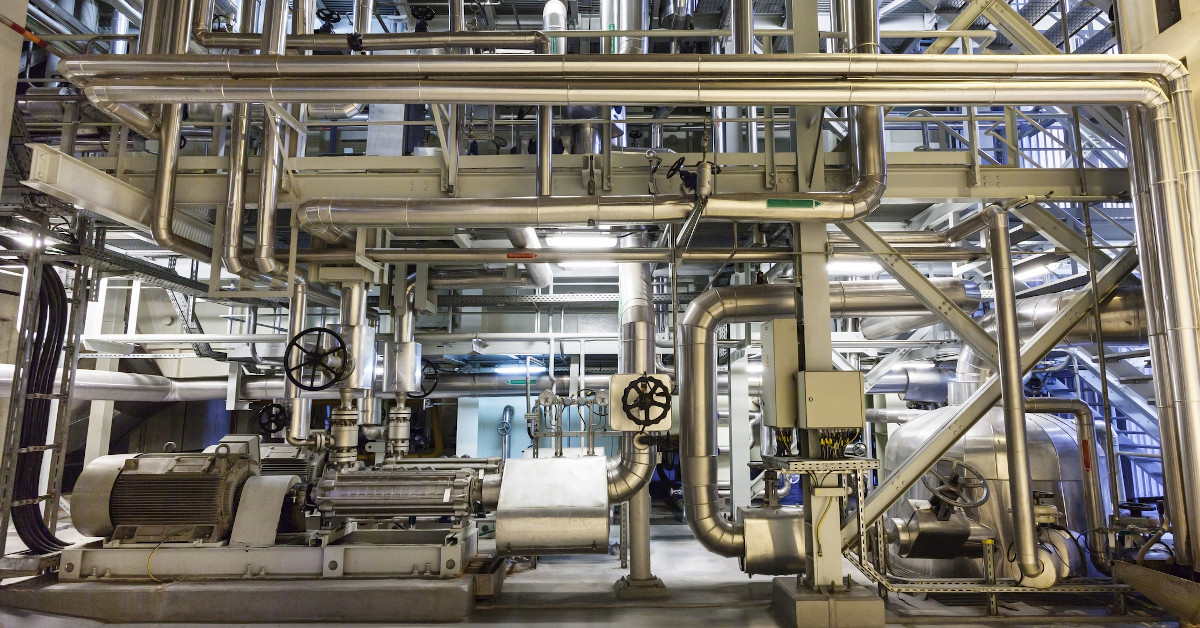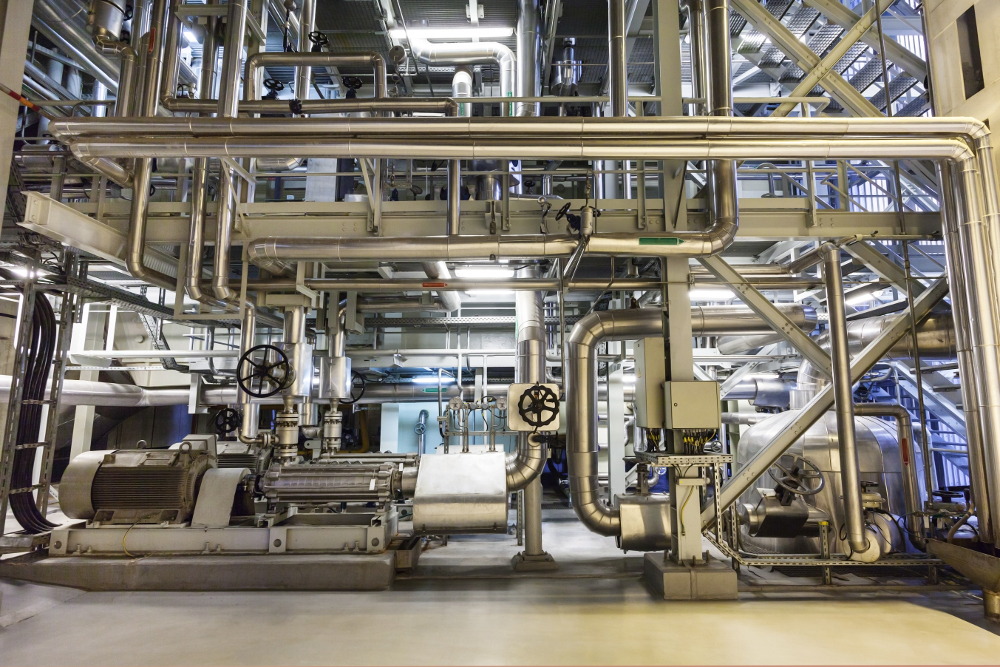Author: Ryan Welker – Integrated Test & Measurement (itm), LLC, Ryan Welker – Integrated Test & Measurement (itm), LLC
Industry: Pulp & Paper/Power Generation/Condition Monitoring/Process Monitoring
Key Words: Condition Monitoring, Boiler Monitoring, Power Generation, Soot-blower Efficiency, Process Optimization, Process Safety, iTestSystem, Compact RIO, cRIO, cDAQ, FieldDAQ, LabVIEW, Embedded Systems, National Instruments, OSI-Soft
Process Optimization with Embedded Monitoring Systems
Optimizing process efficiency, reliability, and safety using NI cRIO embedded controllers for condition analysis and KPI outputs.
Realizing efficiency improvements and uncovering hidden unsafe conditions in a process can prevent injury and save your company millions. However, unless you have a method for rapidly building and deploying a system to embed and iterate on your optimization ideas, you will not be able to maximize these savings. This article describes the data collection method and tools ITM uses to deploy its process efficiency, reliability, and safety optimization solutions.
Background
Since 2001, ITM has been designing and deploying embedded process monitoring solutions for our customers. One of our customers in the pulp & paper industry wanted to create a competitive advantage over its competitors by significantly improving the efficiency of its boilers.
“How can I increase my boiler efficiency?”
One problem that boilers have is that their efficiency decreases as they become dirty. Soot/Slag buildup on the steam generation tubes inside a boiler insulates the tubes which lengthens the amount of time it takes for the evaporation process. In order to keep the boiler operating efficiently for long periods of time, boiler operators need to remove soot while the boiler is in operation. Sootblowers are used to solve this problem. Thus the efficiency of the boiler can be improved by increasing the effectiveness of the Sootblowers, which led us to our next question.
“How can I measure sootblower effectiveness?”
Sootblowers are most effective when they are cleaning an area of the boiler experiencing high soot buildup, and least effective when being run in an area that is completely clean. In fact, cleaning an area that is already clean can actually damage the tube. In order to effectively use the sootblowers to remove soot and not cause tube erosion damage, first we needed to answer one more question.
“How do I measure the amount and location of soot buildup on the boiler tubes inside a boiler?”
This question was, we felt, the key question that needed to be answered for this application. Finding a solution to this would lead us back to our ultimate goal – increasing the efficiency of the boiler. In order to answer this question, we followed the process below.
Finding Solutions
While answering questions like the ones listed above, we find that the methods and tools for rapidly finding solutions to optimize customers’ processes are almost always the same. First, we observe the process and postulate which structure, system, and physical measurements can be used to answer the question. Then, we install a temporary system to monitor and record the process through all stages of operation. Finally, our engineers analyze the data and correlate the analysis results with the process’s condition through key performance indicators (KPIs).
Tools to Observe, Record, Analyze, and Correlate
Since these monitoring systems are temporary and require rapid deployment, we need our software and hardware solutions to be both configurable and adaptable. For the hardware, we need a system that is inexpensive yet reliable, which is why we choose the National Instruments (NI) cDAQ platform. For the software, we use our iTestSystem software, which was developed using LabVIEW for cDAQ and FieldDAQ data acquisition. When packaged with a network connected industrial computer in a rugged industrial case, this system can be deployed in harsh environments for long periods of time, collecting terabytes of data.
It often requires many tools to develop analysis algorithms and correlate the results to process condition KPIs. Fortunately we have many choices, since iTestSystem logs data to an open file type (tdms) that can be read in LabVIEW, Excel, MatLAB, and iTestSystem’s TestView Plus application. In most cases, we use TestView Plus and LabVIEW to analyze the data.
TestView Plus contains many of the common analysis functions like Fast Fourier Transforms (FFT), signal integration, and process parameter statistics so there is no need to reinvent the analysis wheel for each test. For custom analysis and correlation we use LabVIEW and its analysis tools.
Developing a Prototype
After determining the process algorithms for generating KPIs, our objective for most projects is to develop an embedded system prototype. This prototype needs to autonomously read sensor and network inputs, process the data from these inputs using algorithms, and generate KPI outputs to data historians like OSIsoft’s PI System and process control devices.
When developing process optimization prototypes, we use NI’s CompactRIO (cRIO) platform. The cRIO Controller is a rugged, reliable, high-performance, industrial-grade embedded controller with industry-standard certifications. It is ideal for applications that need waveform acquisition, high-speed control or signal processing, hardware reliable tasks, or unique timing and triggering. cRIO controllers are programmed using LabVIEW.
Since we already use LabVIEW tools to develop the KPI algorithms, the transition between analysis and prototype deployment is seamless. We build the system functionality (network and sensor inputs, data processing, and KPI outputs) in LabVIEW and deploy it to the cRIO.
When we install a prototype in the field for testing, we typically package a networked industrial PC with Windows, iTestSystem, and LabVIEW along with the cRIO. The industrial PC allows us to change and redeploy the system functionality as needed.
Solution Deployment
After the prototype is qualified, the next step is to build and deploy the final solution. Our choice for the final solution is the same cRIO as the prototype, minus the Industrial PC, packaged in a stainless steel enclosure.
Example Solutions
At the beginning of this article, we posed several questions about boiler cleaning process efficiency. These questions and a few more are listed below.
- How can I increase my boiler efficiency?
- How can I measure sootblower effectiveness?
- How do I measure the amount and location of soot buildup on the boiler tubes inside a boiler?
- How can I prevent tube erosion?
- Is my sootblower operating safely?
- Do my sootblowers have any mechanical faults?
ITM has developed technologies to answer these questions using the methods described above. Two of these solutions are listed below.
SFD – Sootblower Fouling Detection System
Sootblower Fouling Detection (SFD) systems assess boiler tube soot buildup levels and measure sootblower operation efficiency. SFD systems can also identify specific sootblower safety and maintenance issues such as packing leaks, condensate, and mechanical faults. * US Patent 9927231B2
CDS – Clinker Detection System
Clinker Detection Systems (CDS) measure both the size and frequency of deposits that impact a utility boiler floor or bed. This technology enables operations personnel to shorten boiler outages, identify fouling problems, identify damaging impacts, and optimize soot blower operations. * US Patent 10060688B2
Conclusion
Building process efficiency, reliability, and safety optimization solutions to save millions requires flexible and reliable software and hardware platforms. iTestSystem, LabVIEW, and the cRIO platform allow us to rapidly develop these data logging and analysis solutions without spending all the realized savings.
Contact ITM
Our goal at Integrated Test & Measurement is to provide efficient solutions to address your company’s needs. If you’re ready to take the next step in increasing the safety and efficiency of your processes, please contact ITM by phone or e-mail and ask about Process Efficiency, Reliability, and Safety Optimization.
Contact Information: For more information on this Article or any of our data collection solutions, please visit iTestSystem.com or contact:
Ryan Welker – Integrated Test & Measurement (ITM), LLC – ryan.welker@itestsystem.com










